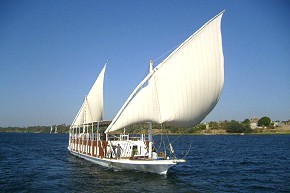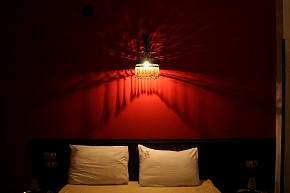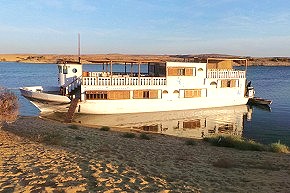We Provide
- Building Land
- Gorf *2202 (175 sqm)
- Aqalta *2216 (350 sqm)
- Gabawi *1712 (350 sqm)
- Gorf *2203 (350 sqm)
- Seoul *2204 (400 sqm)
- Gorf *2105 (525 sqm)
- Aqalta *2226 (700 sqm)
- Gorf *2206 (700 sqm)
- Aqalta *2207 (1,050 sqm)
- Aqalta *2236 (3,500 sqm)
- House Building Service
- Architecture
- Real Estates
- Hotel in Gezira
- Algana Compound, Qurna
- Villa Hana, Ramla
- Villa Hana, Ramla
- Villa Suraya, Habu
- Beit Tabuna, Habu
- Shell Apartment Papyrus, Habu
- Shell Apartm. House Mudir Gorf
- Shell Villa Farha, Gorf
- Apartment Hatshepsut 2, Gezira
- Apartment Hatshepsut 3, Gezira
- Apartment Hatshepsut 4, Gezira
- Holiday Flats
- Hatshepsut 1 (1 BR), Gezira
- Hatshepsut 2 (1 BR), Gezira
- Nile View (1 BR), Ramla
- Hatshepsut 3 (2 BR), Gezira
- Hatshepsut 4 (2 BR), Gezira
- Hatshepsut 5 (2 BR), Gezira
- Hatshepsut 7 (2 BR), Gezira
- Hatshepsut 9 (2 BR), Gezira
- Hatshepsut 6 (3 BR), Gezira
We Organise
We Report
- Sorry, no more news!
- News 2014 (26)
- News 2013 (76)
- News 2012 (92)
- News 2011 (125)
- News 2010 (31)
- News 2009 (12)
- News Overview
Useful Tools
Dahabiya Nile Cruises• from Esna to Aswan |
Privately Owned Hotel for Sale, Luxor Westbank• Centrally, quietly located in Gezira |
Lake Nasser Cruises• from Aswan or Abu Simbel |
![]()
Living in Luxor - Excursions: Trips to Elkab
Sights at Elkab (El-Kāb - الكاب)
The village of Elkab is located 80 km south of Luxor and 15 km north of Edfu on the east bank of the Nile. There, at the mouth of Wadi Hilal, was the ancient city of "Nekheb" one of the oldest settlements of Upper Egypt. Its massive mud-brick walls, dating to the Late Period (747 - 332 BC) are still largely preserved. The main temple was dedicated to the Vulture Goddess Nekhbet who was the patron of Upper Egypt. The temple is heavily destroyed and not accessible but you can visit 3 smaller temples as well as rock-cut tombs of the provincial governors of Elkab. Also well worth seeing are numerous petroglyphs and inscriptions which you can find on your way between the temples on the rock faces.
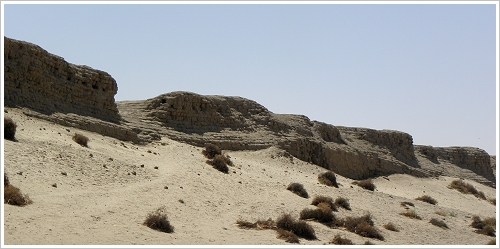
Elkab - Mud-brick wall of the ancient city of Nekheb
![]()
The Rock-Cut Tombs of Elkab
The hillside rock-tombs date back to the New Kingdom (18th to 20th dynasty). The colourful reliefs show scenes of the daily life as well as religious depictions in the context of the tomb-owner's burial.
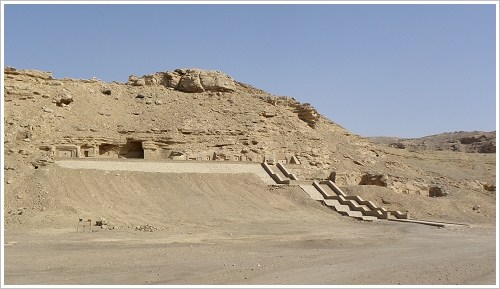
Stairway to the rock-cut tombs of Elkab
• Tomb No. 3: Paheri, 18th Dynasty
Paheri was mayor, priest of the goddess Nekhbet, tutor and during the reign of Thutmose III. The paintings in his tomb show agricultural scenes, fowling and fishing, the preparation of food as well as offerings at his funeral procession.

Statue of Paheri between his wife and his mother with banquet painting on the right wall
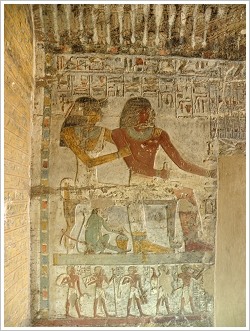
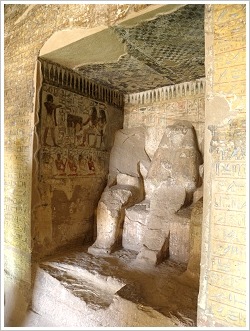
East wall: Paheri with his wife Niche with depiction of their children
• Tomb No. 4: Setau, 20th Dynasty
Setau was high priest in the service of the Vulture Goddess Nekhbet during the reign of Ramses III.
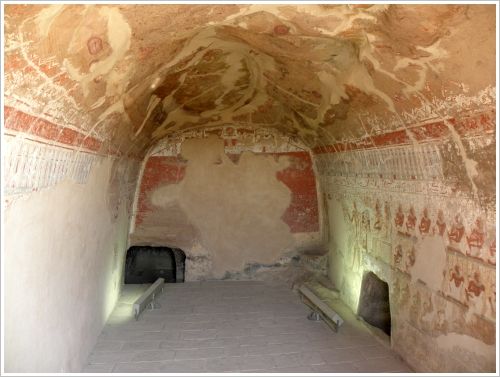
Tomb of Setau
The east wall shows Setau offering gifts with his wife and his son-in-law Ramses-nakht as a priest with the fur of a panther:
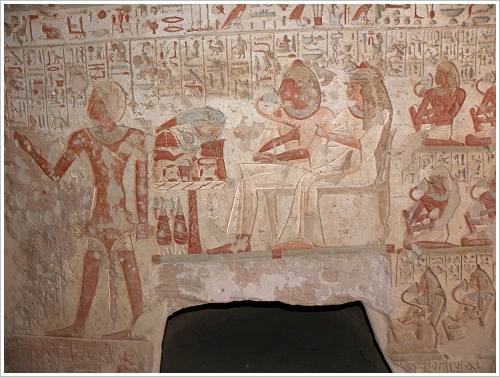
East wall
• Tomb No. 5: Ahmose, 18th Dynasty
Ahmose was the grandfather of Paheri and served in the military under Thutmose III. His autobiography survived in the form of wall paintings in his tomb. They report on his wedding, his participation on wars of liberation against the Hyksos rulers, and battles against the Nubians.
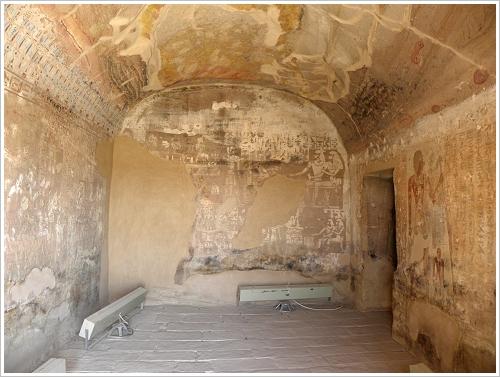
Tomb of Ahmose
On the eastern wall, the tomb-owner stands with his grandson Paheri in front of his famous 31-columned inscription about the final battle against the Hyksos.
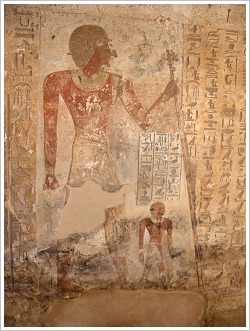
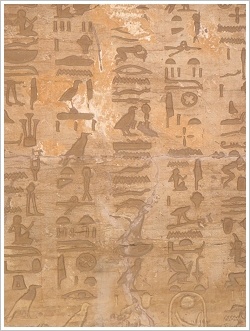
East wall
• Tomb No. 7: Renni, 18th Dynasty
Renni was mayor, provincial governor, and high priest during the reign of Amenophis I.
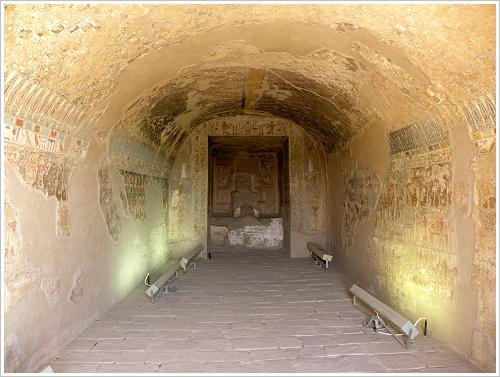
Tomb of Renni with his statue in the rear

The east wall shows the tomb-owner with his wife
![]()
The Petroghyphs of Elkab
On the way between the rock-tombs and the temples of Elkab you should leave the car and walk around the rocks in the beginning desert. The faces of the rocks are covered with numerous praedynastic petroglyphs as well as Old Kingdom inscriptions.

Elkab - Rock inscriptions
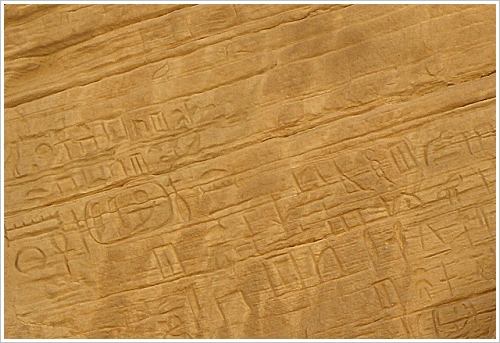
... and a detail of it
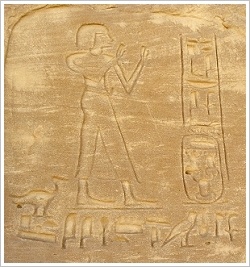
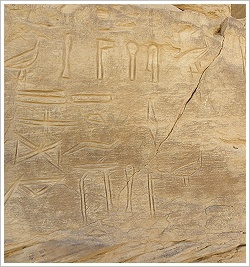
More rock inscriptions
![]()
The Temples of Elkab
In Elkab, there are 3 smaller temples. We start our visit with the temple which is furthest from the main road:
Temple of Amenhotep III
It is dedicated to the cow-headed goddess Hathor and the vulture goddess Nekhbet and dates back to the 18th Dynasty.
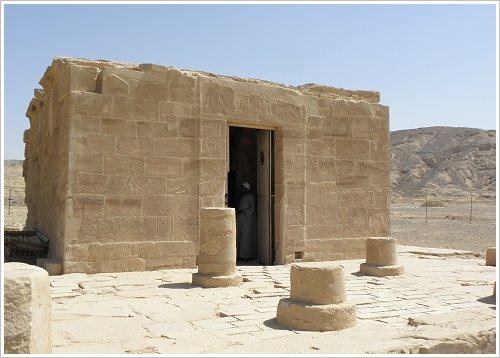
Elkab - Temple of Amenhotep III
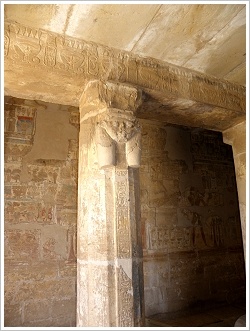
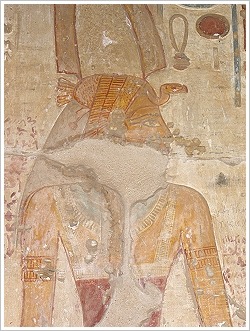
Pillar with Hathoric capitol Nekhbet
East wall - scene on the left: Amenhotep III receives life energy from Horus.
East wall - scene on the right: Amenophis III brings offerings to Nekhbet.
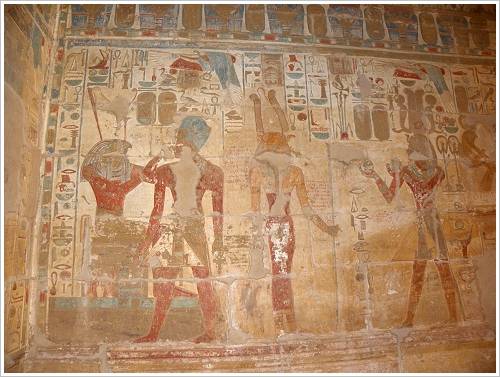
East wall
Temple of Setau
The square temple, also called "El-Hammām" and "Chapel of Thot" was built by Setau, Viceroy of Kush, during the reign of Ramses II.
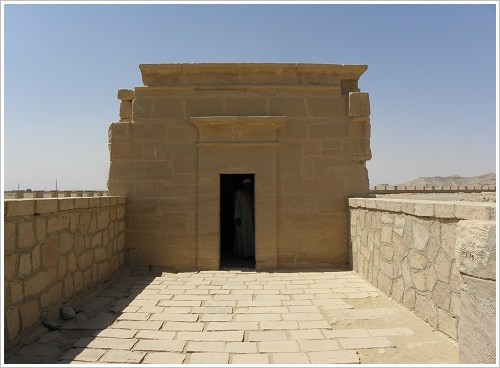
Elkab - Temple of Setau
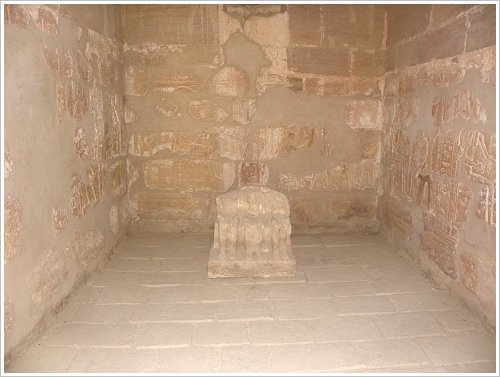
Inside the temple of Setau
The Ptolemaic Hemi-speos
"Hemi-speos" is the name for a temple which is partially rock cut and partially exposed. The Hemi-speos in Elkab was already built during the reign of Ramses II but early destroyed and only then new built during the reign of Ptolemaios VIII and IX. It is dedicated to the Lion Goddess Seshmetet. A 15 m long stairway leads to the terrace, the courtyard, and the rock-cut sanctuary.
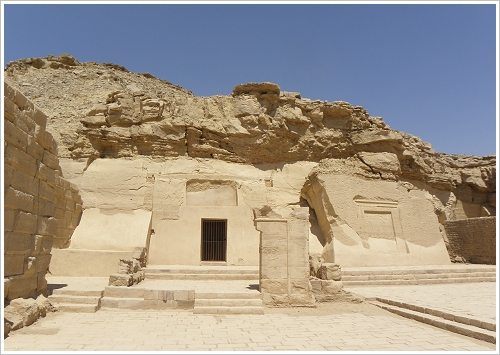
Elkab - Ptolemaic Hemi-speos
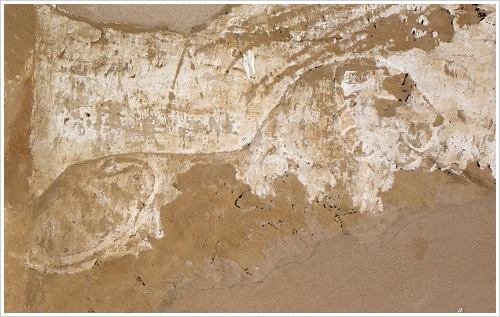
Lion Goddess Seshmetet
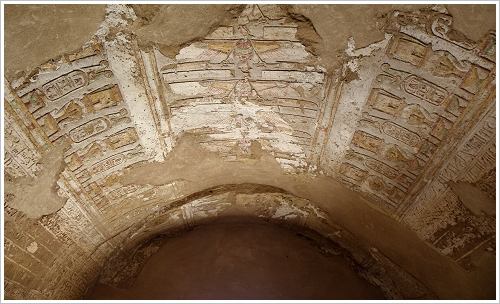
Arched ceiling with vulture goddess Nekhbet
![]()
Our Service in Luxor
For your trip starting at Luxor we organise a car which takes you to the mentioned sights in Elkab and if you wish as well to the Khnum Temple at Esna. Kindly let us know your wishes, we make you a favourable offer.
![]()
Geographical Position
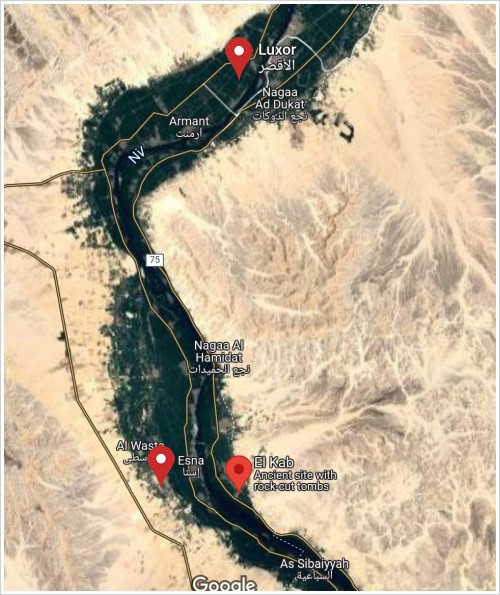
Route from Luxor to Elkab, © Google
 To the list of excursions ...
To the list of excursions ...
